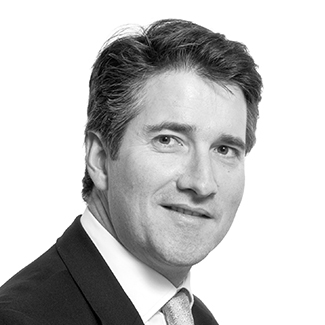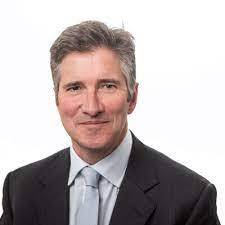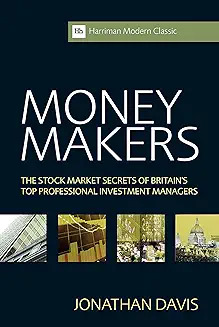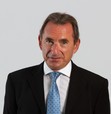#28 – The Continuous Learner
 /*! elementor - v3.17.0 - 08-11-2023 */.elementor-widget-text-editor.elementor-drop-cap-view-stacked .elementor-drop-cap{background-color:#69727d;color:#fff}.elementor-widget-text-editor.elementor-drop-cap-view-framed .elementor-drop-cap{color:#69727d;border:3px solid;background-color:transparent}.elementor-widget-text-editor:not(.elementor-drop-cap-view-default) .elementor-drop-cap{margin-top:8px}.elementor-widget-text-editor:not(.elementor-drop-cap-view-default) .elementor-drop-cap-letter{width:1em;height:1em}.elementor-widget-text-editor .elementor-drop-cap{float:left;text-align:center;line-height:1;font-size:50px}.elementor-widget-text-editor .elementor-drop-cap-letter{display:inline-block}
/*! elementor - v3.17.0 - 08-11-2023 */.elementor-widget-text-editor.elementor-drop-cap-view-stacked .elementor-drop-cap{background-color:#69727d;color:#fff}.elementor-widget-text-editor.elementor-drop-cap-view-framed .elementor-drop-cap{color:#69727d;border:3px solid;background-color:transparent}.elementor-widget-text-editor:not(.elementor-drop-cap-view-default) .elementor-drop-cap{margin-top:8px}.elementor-widget-text-editor:not(.elementor-drop-cap-view-default) .elementor-drop-cap-letter{width:1em;height:1em}.elementor-widget-text-editor .elementor-drop-cap{float:left;text-align:center;line-height:1;font-size:50px}.elementor-widget-text-editor .elementor-drop-cap-letter{display:inline-block} Sebastian Lyon is a conservative investor who manages two highly successful multi asset funds. His motto is simple over complex and he is intent on protecting the downside.
SUMMARYSebastian Lyon is a conservative investor who manages two highly successful multi asset funds. His motto is simple over complex and he is intent on protecting the downside. In this interview, we discuss his views on markets (spoiler: not super bullish), how he built a significant asset management business from scratch, how he has managed his fund to deliver only 3 down years in 20, what he looks for in stocks, why he invests only in quality companies and why he owns gold.
/*! elementor - v3.17.0 - 08-11-2023 */.elementor-widget-image-box .elementor-image-box-content{width:100%}@media (min-width:768px){.elementor-widget-image-box.elementor-position-left .elementor-image-box-wrapper,.elementor-widget-image-box.elementor-position-right .elementor-image-box-wrapper{display:flex}.elementor-widget-image-box.elementor-position-right .elementor-image-box-wrapper{text-align:right;flex-direction:row-reverse}.elementor-widget-image-box.elementor-position-left .elementor-image-box-wrapper{text-align:left;flex-direction:row}.elementor-widget-image-box.elementor-position-top .elementor-image-box-img{margin:auto}.elementor-widget-image-box.elementor-vertical-align-top .elementor-image-box-wrapper{align-items:flex-start}.elementor-widget-image-box.elementor-vertical-align-middle .elementor-image-box-wrapper{align-items:center}.elementor-widget-image-box.elementor-vertical-align-bottom .elementor-image-box-wrapper{align-items:flex-end}}@media (max-width:767px){.elementor-widget-image-box .elementor-image-box-img{margin-left:auto!important;margin-right:auto!important;margin-bottom:15px}}.elementor-widget-image-box .elementor-image-box-img{display:inline-block}.elementor-widget-image-box .elementor-image-box-title a{color:inherit}.elementor-widget-image-box .elementor-image-box-wrapper{text-align:center}.elementor-widget-image-box .elementor-image-box-description{margin:0} GETTING INTO INVESTING
GETTING INTO INVESTINGSebastian’s father was a stockbroker and he bought his first stock at 14 (Steve stupidly forgot to ask which stock!) and set up a Stock Soc at university and did informal internships in different parts of the City of London. He worked in aircraft leasing, corporate finance, stockbroking, market making and in his last university summer in investment management. He preferred that because it was more cerebral and longer term and he went to work as a graduate trainee for the firm where he had interned.
Some takeawaysBuilding an Asset Management BusinessSebastian was asked by Lord Weinstock, the industrial titan who built GEC into one of the UK’s leading companies over 40 years, to manage his family’s money. Sebastian didn’t want to run a family office but started Troy as an investment management firm with a view to attracting external investors. Troy was named after one of Weinstock’s horses which had won the Derby in 1979.
Sebastian’s Investment ApproachWhen he started his career in 1989, the UK market had a very tough time and the residential property market crashed. He saw the UK housebuilders fall by 90%. Domestic cyclicals performed really badly for 3 years. He was therefore attracted then to more defensive businesses.
When he launched the Troy Trojan fund in 2001, just after the dot.com boom, he could see the ridiculous over-valuations in the tech area. And the market had overlooked a lot of high quality values stocks which had been left behind and which he would have preferred to own anyway.
In 2002, the bear market really kicked in but he defended capital well. Weinstock had said to him “I am not interested in benchmarks – don’t lose my money”.
His approach is to avoid torpedoes; to avoid valuation risk; and to emphasise quality which he defines as consistent returns and with lower volatility than that associated with more cyclical businesses. He has never owned a housebuilder, a retail bank or an airline.
He also believes that he needs t be paid to take risk so he flexes his equity exposure down when stocks are highly priced and up when stocks are lowly valued.
What He Looks ForTroy has an investible universe of around 200 quality companies. He likes companies which over the long term have reduced their share count. He pays close attention to the historical record, looking back over the last 10 years – the past can give you a really good indication of how the company has performed. Has it invested well, generated cash or has it been a poor allocator of capital. Has there been a lot of turnover in management?
These are backward looking factors. They then considers the stockmarket aspect and valuation and he tries to be patient and wait for opportunities in these quality stocks, which are rare. They like to buy in when investors are looking the other way.
He has bought Heineken this year which suffered in Covid as the pubs were closed and were hot by increases in energy and input costs after – the stock had gone sideways for five years and people were a bit bored with it. He doesn’t feel there is that much downside and if it does fall further, he will feel confident to add to the position.
He looks for simple businesses which will be straightforward to run and shuns complex businesses. He tries to look at this from the CEO’s perspective. Meanwhile in finance, everyone loves complexity and the more Greek letters the better – Sebastian feels nervous as soon as a Greek letter is mentioned.
He cites the Peter Lynch saying “Know what you own and why you own it”.
Other ShowsIn this episode we referenced past shows with Chris Wood (#8) and with Alec Cutler (#26).
ABOUT Sebastian LyonSebastian began his career in 1989 at Singer & Friedlander Investment Management. He moved to Stanhope Investment Management which managed the GEC Pension Fund in 1995, where he jointly managed the £2 billion equity portfolio and the Fund’s asset allocation. He had the office next door to Lord Weinstock, and they used to discuss stocks which led to Weinstock inviting him to manage his family’s money and to Sebastian establishing Troy Asset Management. He remains Troy’s Chief Investment Officer and is responsible for Troy’s Multi-Asset Strategy. The investment approach is cautious, targeting absolute returns. with a bias towards value investments. Sebastian has a BSc in Politics from Southampton University and enjoys golf and tennis.

Sebastian recommended Money Masters by Jonathan Davis. It runs through 8 investors including Anthony Bolton and Ian Rushbrook, and one of the things that struck Sebastian was that they were all very successful but they all did it very differently. He was particularly drawn to Ian Rushbrook’s methodology incorporating stock-picking and macro/strategy.
Buy on amazon.com Buy on amazon.co.UK HOW STEVE KNOWS THE GUEST
HOW STEVE KNOWS THE GUESTSteve met Sebastian at a breakfast economics presentation by Peter Warburton and has been cajoling him to be a guest for some time now. Sebastian’s clarity of thought and simplicity of approach is refreshing.
Full disclosure: Troy Asset Management is a client of Behind the Balance Sheet and Steve and family are invested in the Troy Trojan fund.
PrevEasy Stock Ideas
The post #28 – The Continuous Learner appeared first on Behind The Balance Sheet.



